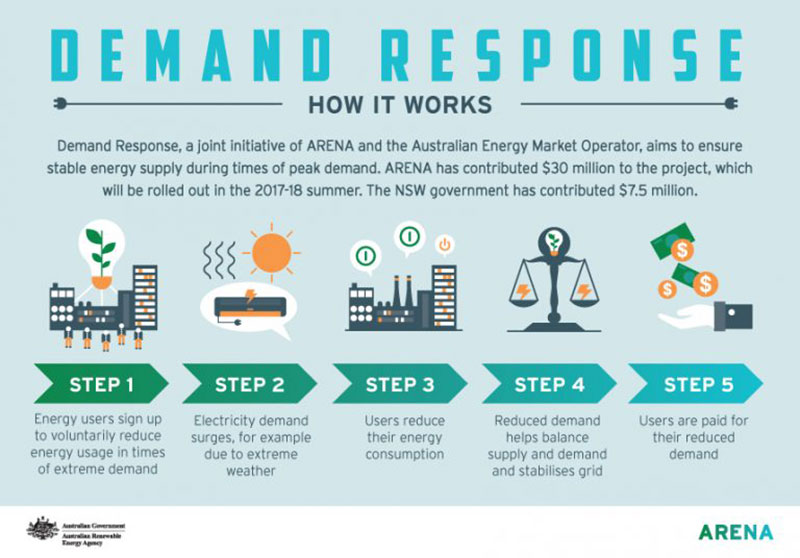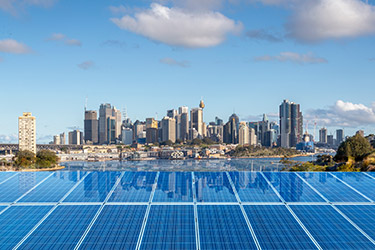Demand response rule changes in Australia: what they mean for you
Paul Moore, Published: November 14, 2019 - Updated: July 7, 2020 (6 min read)
As the closure of another coal-fired power station draws closer, planning Australia’s energy future is becoming even more important.
One of the solutions currently in discussion is demand response.
Already introduced in major energy markets such as China and the US, demand response has been highlighted as a way of maintaining energy reliability as power stations close. In Australia, demand response is currently offered by a limited number of energy retailers.
In the last few months, the Australian Energy Market Commission (AEMC) released a new draft rule for a demand response mechanism. This comes after many years of advocates pushing for its introduction, and after 10 demand response pilot programs were run across South Australia, New South Wales and Victoria.
The proposed rule change would open up the energy market, bringing more stability and reliability to supply during peak periods. For large energy consumers, demand response presents an opportunity to reduce energy costs and to potentially add a revenue stream to your business.
To help you understand what the rule changes mean for your business, keep reading.
Demand response: what is it?
Demand response is voluntarily reducing energy consumption during periods of high electricity demand in order to make it available to the network.
This might involve high-energy users, such as smelters or refineries, altering hours of operation in order to run some of the more electricity-intensive processes at off-peak times.
 Demand response initiatives encourage users to voluntarily reduce energy consumption during periods of high demand. Image courtesy of ARENA.
Demand response initiatives encourage users to voluntarily reduce energy consumption during periods of high demand. Image courtesy of ARENA.
Another method of demand response is powering down non-essential equipment during periods when high energy consumption is expected. Both demand response techniques aim to help balance energy supply across the network.
Demand response initiatives can reduce the need for developing more network infrastructure. To increase the capacity of the network is an expensive and time-consuming undertaking, one that is only called on a few times each year when additional capacity is needed.
We recently published a blog post that explains how demand response works and whether it is suitable for all customers.
Read the post here: how demand response can change the Australian energy market
Reforms to the demand response rules
In July, the AEMC announced a draft determination:
Under the draft rule, a new category of registered participant, a demand response service provider (DRSP), would be able to bid demand response directly into the wholesale market as a substitute for generation.
A demand response service provider (DRSP) is a new type of registered participant in the network energy market. The role of a DRSP is to offer demand reductions from large consumers back into the wholesale market, selling the capacity they have available and compensating the consumer for making reductions.
Think of a DRSP as a type of trader — they have a portfolio of consumers that have nominated the amount of consumption that can make available. When there is a demand response event or an upcoming period of high demand, the DRSP can make these demand reductions available to the wholesale market, sells them as needed and then pays the consumers for the loading that was utilised.
National Energy Manager at SAGE, Paul Moore, explains the proposed demand response rule
changes and how they can impact large energy consumers.
What does the demand response rule change mean?
Essentially, the proposed reform will make it easier for large industrial or commercial consumers to participate in demand response initiatives.
Under this rule change, a demand response service provider can work directly with a consumer to sell their demand reductions (or discretionary loads) into the wholesale market. Until now, this service has only been available to energy retailers.
How do the reformed demand response rules and industry changes impact you?
- Commercial and industrial customers can reduce their consumption and sell this demand reduction back into the grid via a demand response service provider (DRSP).
- During periods of peak demand, these customers will be able to power down or reduce their consumption, allowing it to be bid into the market.
- If using the demand reductions is a cheaper option and generating additional energy to meet peak demand, the demand reductions will be used.
- DRSP will have similar obligations as generators, responsible for providing information to the wholesale market.
The Australian Energy Market Operator (AEMO) will set a baseline price, this will form the basis to calculate the value of demand and what is paid to the consumer.
While there has been some questions about the complexity of the mechanism, it is a cheaper and faster method to allow the market to meet demand, without relying on new power stations being built.
Implementing demand response within a commercial business has previously been quite a manual process. Now that demand response is becoming more widely available, companies can see huge benefit from investing in energy management systems that can make automating this process a reality. More and more, SAGE is getting requests to commission smart control systems that can turn off excess plant or run equipment only when required. This offers huge cost-saving opportunities for large energy users.
 Smart control systems offer cost-saving opportunities for large energy users by making it easier to shut down
Smart control systems offer cost-saving opportunities for large energy users by making it easier to shut down
equipment during periods of peak demand.
Demand response as a cost-saving measure
Demand response allows consumers to be paid for making energy savings during peak times, as well as helping to reduce overall energy costs by minimising the need for new generation sources. With the proposed rule changes, commercial and industrial consumers can negotiate their position with a DRSP to maximise the benefits for their bottom line.
Final ruling on the proposed reform for demand response is due mid-November, with the final implementation of the reforms due mid-2020. We’ll be keeping a close eye on the developments in this space, so subscribe to our newsletter for the latest updates.
If you are still exploring energy options and looking for cost-saving opportunities for your business, download your free copy of our graphical guide to managing industrial energy costs.
The guide covers a range of topics, including the current technologies that can be used by heavy energy users to improve efficiency and make financial savings.








